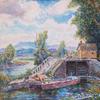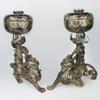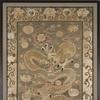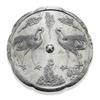Featured 19th Century Painter: LOUIS ICART (1888 - 1950)
- July 17, 2020 10:23
Louis Icart was born in Toulouse, along the Garonne River, in southern France. At that time Toulouse was a haven for writers and artists. He began drawing as a youth; however, his professional path began with study at the prestigious l'Ecole Superieure de Commerce de Toulouse—a business school where he was to pursue a career in banking. A chance discovery of the works of Victor Hugo encouraged a love of the theatre, acting and the arts in general. In 1907 after he moved to Paris, Icart concentrated on drawing, especially etching, and painting. He was to go on to perfect his etching technique. In the early part of his career Icart produced only copies of existing artwork for a Paris studio. He later began submitting his original artwork to different Paris venues, eventually providing illustrations for La Critique Théâtrale magazine. In 1914 he met his "muse", Fanny Volmers, who was employed by the House of Paquin. She was the model for many of his etchings and later became his wife. Icart fought in World War I, and to reduce the stress of war, so the story goes, covered every available surface with drawings. Icart truly came into his own during the Roaring Twenties, known in France as Les Annees Folles, at the same time Art Deco was coming into vogue. Icart was to become the icon of the 1920s and 30s—embracing the energy and opulence of the new age in his art. Although his first influences may have been the French Impressionists, he became known for his portrayals of beautiful women, often clothed in loose, flowing, diaphanous garments and often in somewhat suggestive poses. Icart exhibited in the United States in 1922, first at Belmaison a gallery at John Wanamaker's department store in New York City and later at the anchor store in Philadelphia, Pennsylvania. In 1932, his paintings were exhibited at the Metropolitan Galleries in New York City. Although best known for his iconic beautiful women, Icart captured Paris street life and in his art and produced drawings and etchings with French and American patriotic themes. During the German occupation of France during World War II, Icart created a series of engravings titled "L’Exode" (the Exodus"). On a lighter note, supposedly it was Icart who and "Come up and see my etchings some time"—a line that the risqué American vaudeville and screen actress Mae West slightly modified and made famous in the 1933 film "She Done Him Wrong".



















![Offering a Truce [Bested], 1895, is estimated to sell for between $1,300,000 and $1,800,000 on March 22, 2014, for The Russell: An Exhibition and Sale to Benefit the C.M. Russell Museum. Offering a Truce [Bested], 1895, is estimated to sell for between $1,300,000 and $1,800,000 on March 22, 2014, for The Russell: An Exhibition and Sale to Benefit the C.M. Russell Museum.](/images/c/a8/20/Dec10_Offering_a_Truce__Bested_300dpi100x100_c.jpg)
